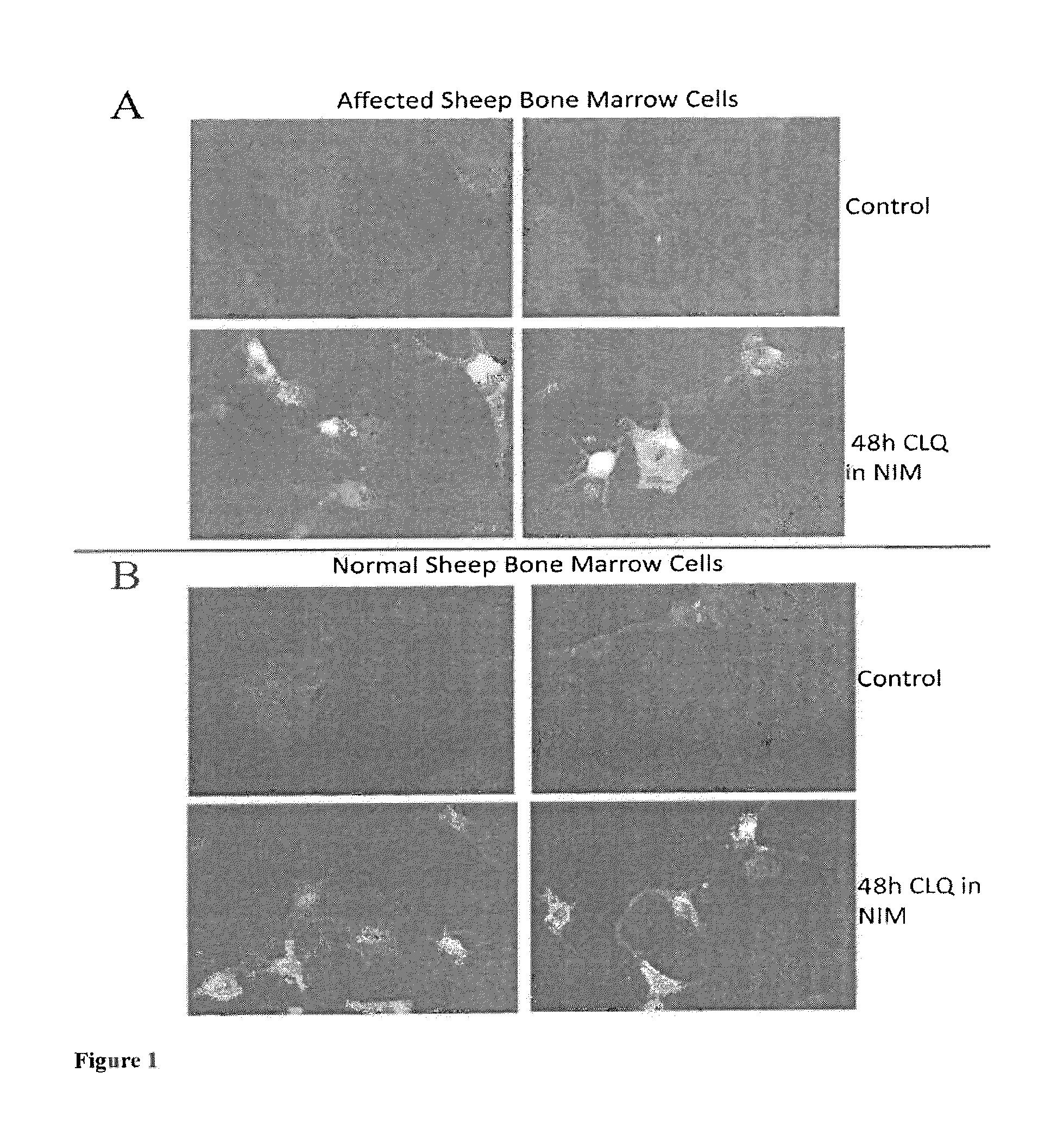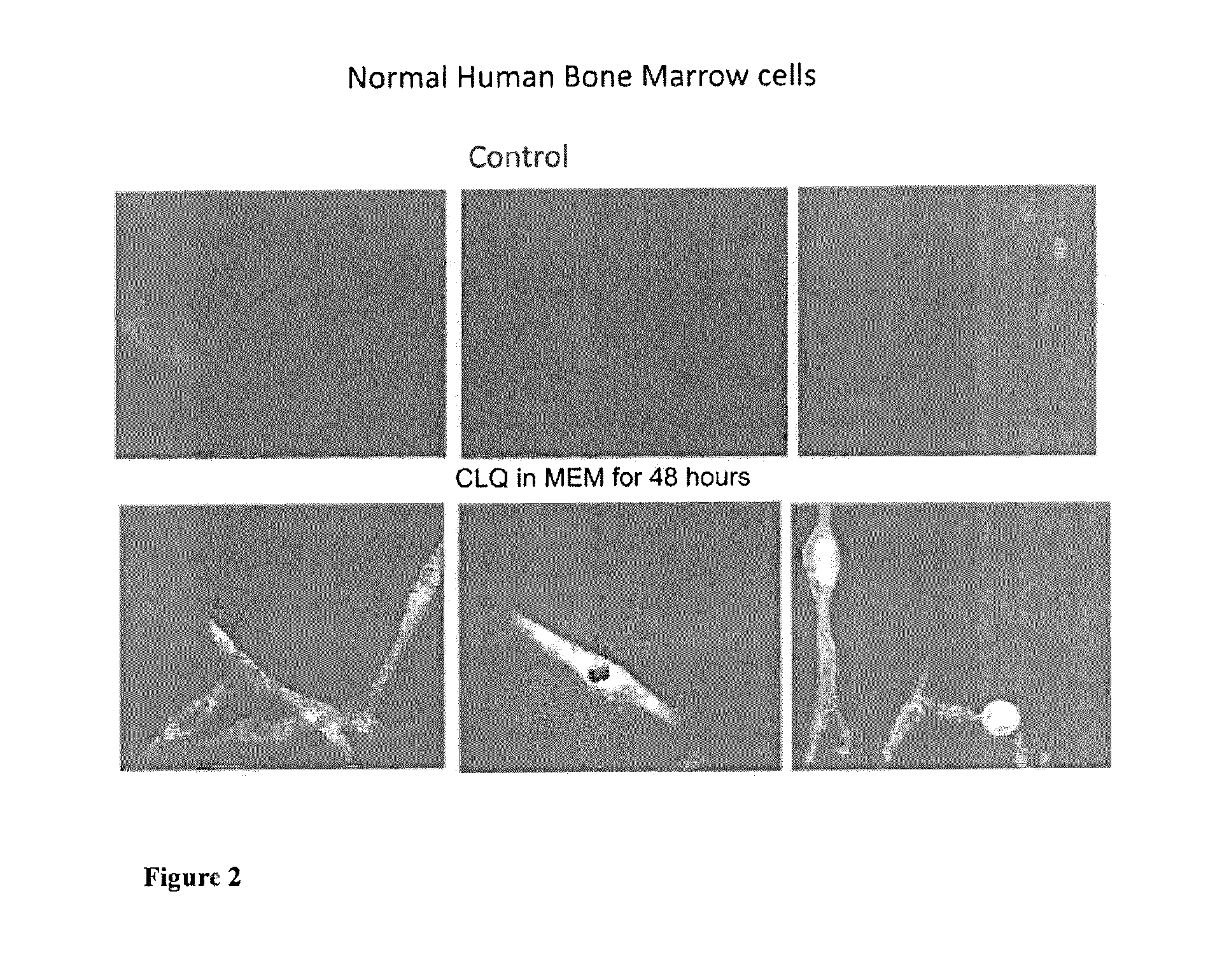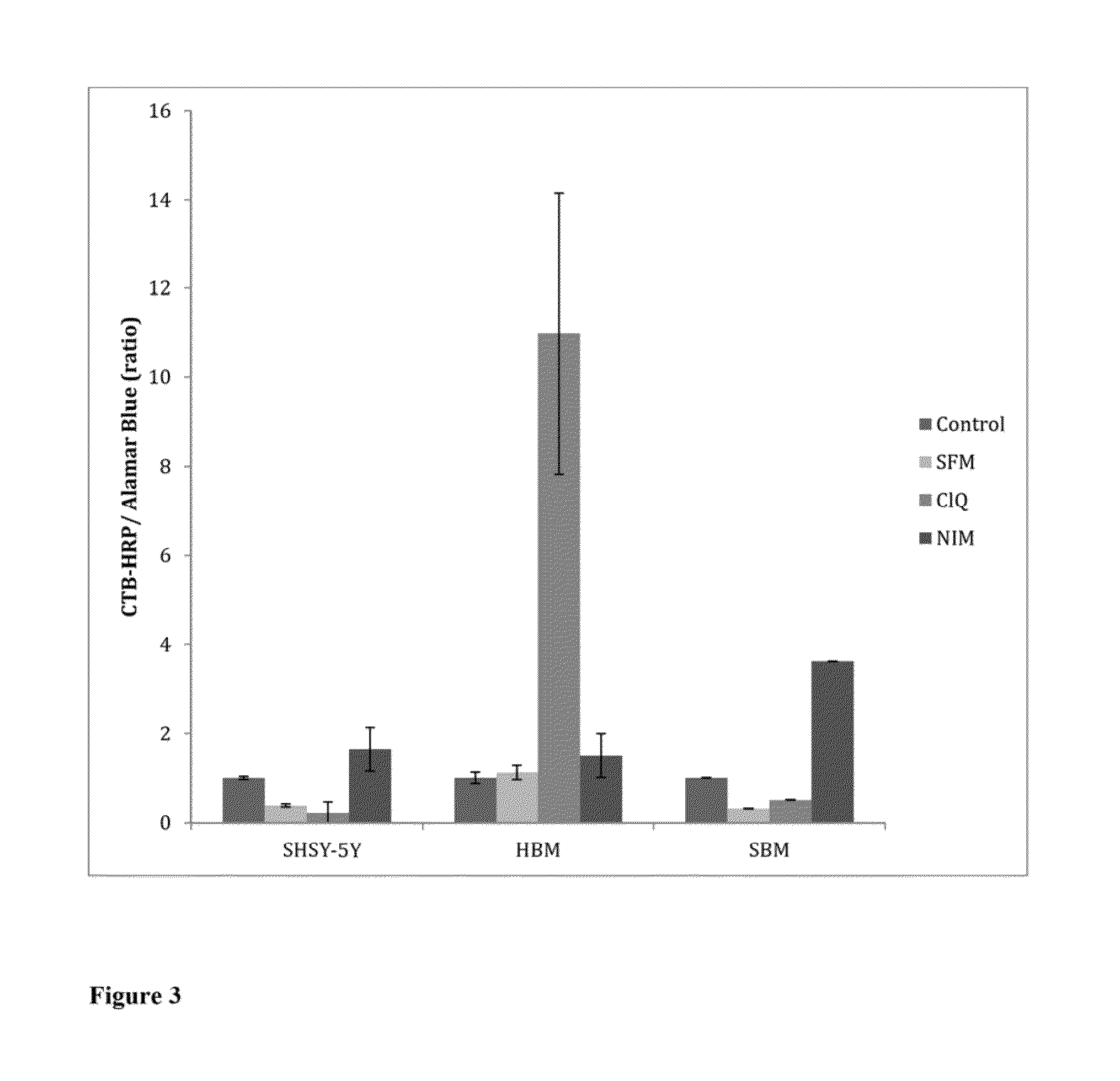Methods of ganglioside production
a technology of gangliosides and gangliosides, which is applied in the direction of drug compositions, skeletal/connective tissue cells, immunological disorders, etc., can solve the problems of affecting the yield and degradation of other gangliosides, restricting the amount of gm1 available for commercial clinical use, and raising similar concerns regarding yield, cost and safety
- Summary
- Abstract
- Description
- Claims
- Application Information
AI Technical Summary
Benefits of technology
Problems solved by technology
Method used
Image
Examples
example 1
[0130]A T-225 Tissue culture flask (Corning, Cat #431081) was seeded with the sheep bone marrow-derived cells (Passage 1 or 2) in Alpha-MEM growth medium (with 10% FBS) at a density of 8,000 cells / cm2.
[0131]The next morning, medium was replaced with 30 ml Neuronal induction medium (NIM): Neurobasal Medium+B27 supplement with Retinoic acid, EGF (25 ug / ml) and FGF (10 ng / ml).
[0132]In the evening, 50 μM chloroquine was added to the flask. About 70% cell death was observed on the 3rd day. The floating cells were removed from the flask by rinsing with PBS. The cells were trypsinized and surviving cells were collected. The cells were spun down and re-suspended in fresh growth medium. New flask was seeded at 8,000 cells / cm2. An aliquot was removed and plated in a 24-well plate for confirming GM1 induction by staining with Cholera toxin conjugated to Alexa488. Compared to untreated (Control) cells, SBM treated with NIM / CLQ (48 h CQ in NIM) have much strong staining for GM1, as shown in FIGS...
example 2
[0135]Adult Human Bone Marrow Cells were seeded in standard tissue culture flasks at a seeding density of 8000 cells / cm2 in Alpha-MEM growth medium (with 10% FBS).
[0136]Next day the medium was replaced, if required, and 50 uM CLQ was added to the flask. The cells were harvested after 48 h. About 10-20% cell death was observed. Fixed cells were stained with CTB-Alexa488 to visualize GM1 levels. Compared to the upper panel (control), the CLQ-treated cells (lower panel) showed significantly higher accumulation of GM1.
example 3
[0137]The objective of this example was to up-regulate GM1 expression in human neuroblastoma cell line, SHSY-5Y, sheep bone marrow-derived cells (SBM) and human bone marrow-derived cells (HBM)
[0138]In one study SHSY-5Y cells, SBM and HBM were seeded in growth media with 10% serum in 24-well plates. The next day, the cells were subjected to 3 different treatment regimens or left in growth media (AMEM with 10% FBS):
[0139]Serum-free medium (SFM)
[0140]Neuronal induction medium (NIM)
[0141]50 uM Chloroquine (CLQ)
[0142]After 48 hours, 100 ul of Alamar Blue dye was added to the wells and incubated for 1 hour. The absorbance of Alamar Blue was measured using a plate reader. The plates were then washed, fixed and processed for GM1 staining using CTB-HRP. Values of CTB-HRP were normalized to Alamar Blue values, which are indicative of surviving cells.
[0143]As shown in FIG. 3, all 3 cell types showed some up-regulation of GM expression in the NIM (compare control to NIM). SHSY-5Y cells showed a...
PUM
 Login to View More
Login to View More Abstract
Description
Claims
Application Information
 Login to View More
Login to View More - R&D Engineer
- R&D Manager
- IP Professional
- Industry Leading Data Capabilities
- Powerful AI technology
- Patent DNA Extraction
Browse by: Latest US Patents, China's latest patents, Technical Efficacy Thesaurus, Application Domain, Technology Topic, Popular Technical Reports.
© 2024 PatSnap. All rights reserved.Legal|Privacy policy|Modern Slavery Act Transparency Statement|Sitemap|About US| Contact US: help@patsnap.com










